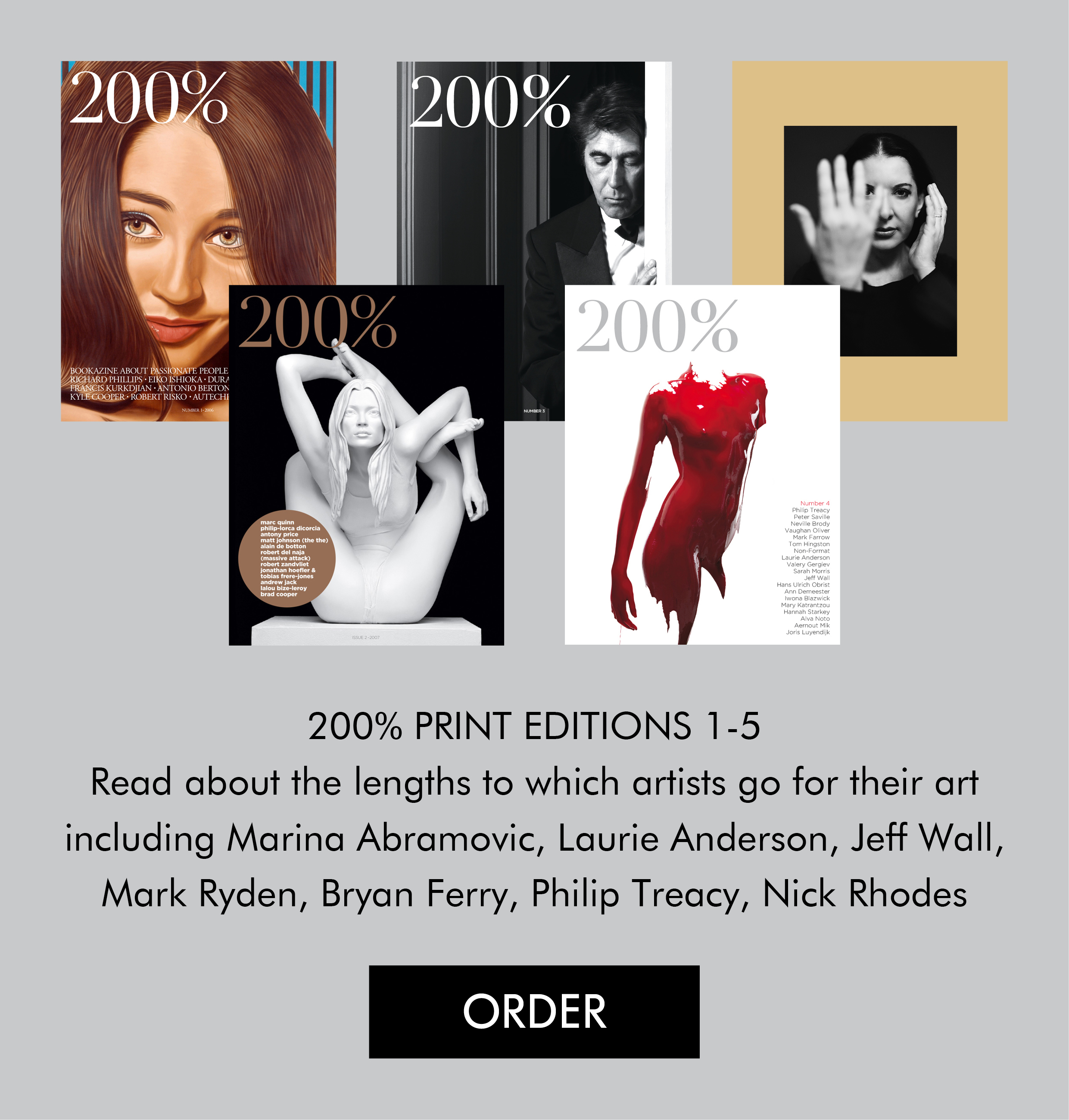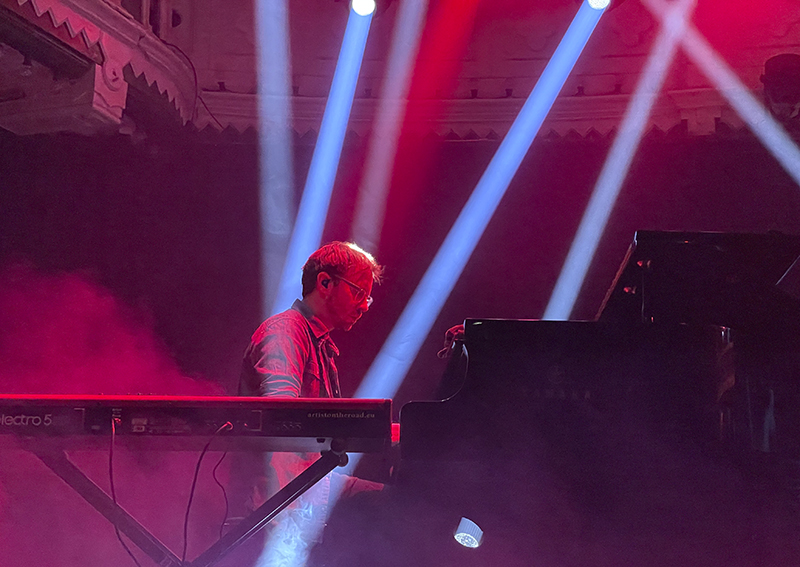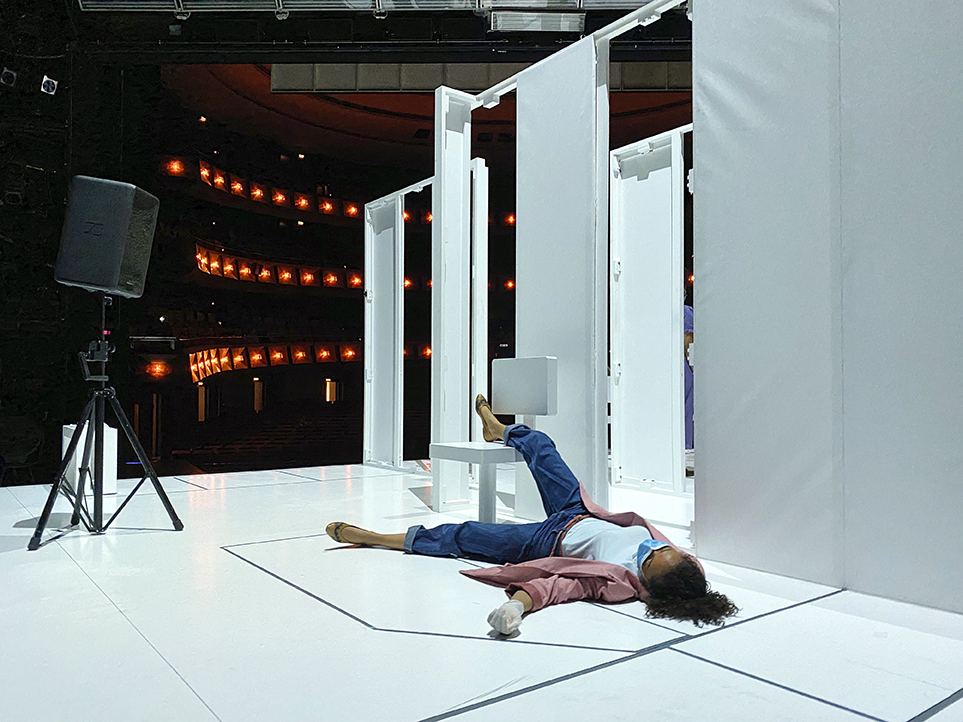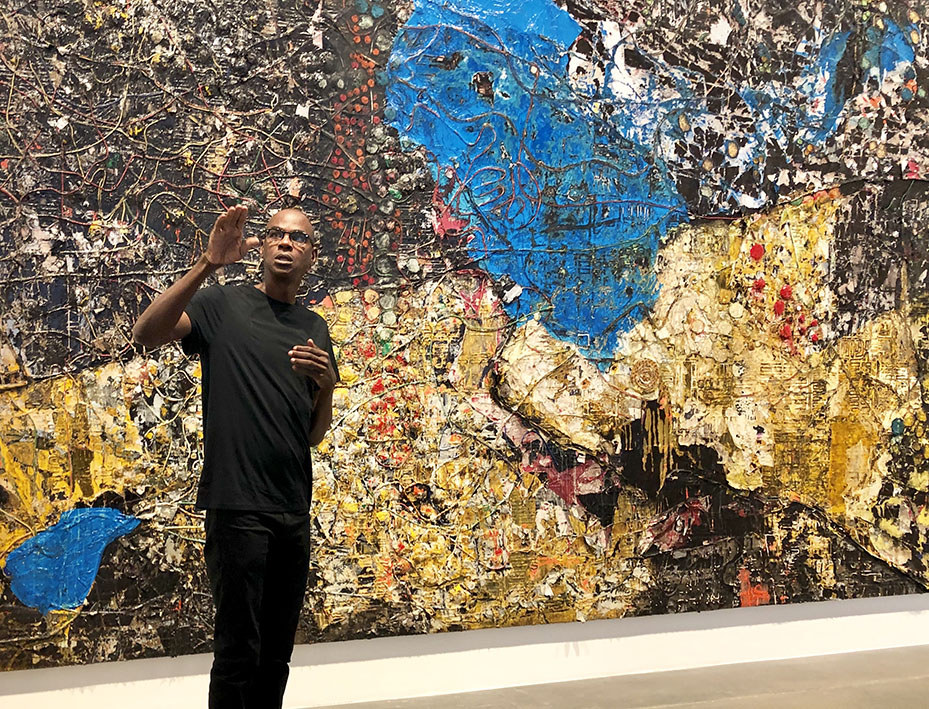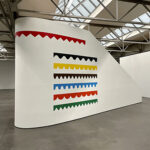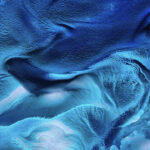 Throughout her career Anne Dudley has experimented with many musical genres. She has been a member of the avant-garde synthpop group, Art of Noise, who used innovative ways of ‘sampling’; has created many film scores, including ‘Black Book’, ‘The Crying Game’ and ‘The Full Monty’ (for which she won an Academy Award); has been the musical director of Bill Bailey’s ‘Remarkable Guide to the Orchestra’; and, most recently, she created her first opera ‘The Doctor’s Tale’ in collaboration with Terry Jones (one of the members of Monty Python).
Dudley is also renowned as a string arranger: she arranged and conducted a Russian-school classical music opening theme for Frankie Goes to Hollywood’s ‘Two Tribes’ and the epic string arrangements for ABC’s album ‘The Lexicon of Love’.
Two of the fifteen songs on our play list ‘Pop Meets the Classics’ (January 2011) featured Dudley’s string arrangements. Here, in her own words, Dudley shares how the string arrangements of ABC’s ‘Lexicon of Love’ originated; explains the difference between ‘real’ strings and strings created on a synthesizer; and how it feels to be standing on the conductor’s rostrum.
The big epic sound
In 1980 Trevor Horn was producing ABC. At that time the band didn’t have a keyboard player or a bass player, but they had some really good songs and lyrics that Martin Fry had written. As the songs were in a basic form, Trevor wanted to re-arrange them; to have them become more interestingly structurally and to build a much bigger epic sound around the ‘bare bones’ of the band.
I had worked with Trevor before on a few things and he asked me to do the string arrangements of the songs. The first track on which we worked with ABC was ‘Poison Arrow’, which was released as a single and was quite successful [It reached #6 on the UK singles chart]. The next main single was ‘The Look of Love’ for which Trevor wanted a big string arrangement on the song. This seemed a great opportunity to do something big and bold.
We recorded the strings in Abbey Road in Studio 1 and had, what I considered, a quite large string section in those days – probably about thirty musicians. We had the full string arrangements, violins, cello’s, contrabasses, and a brass and winds section – so we used the whole spectrum sound.
When I first heard the mix of ‘The Look of Love’ I was quite surprised how Trevor really featured the strings, which became a major part of the whole sound. They had more importance that I had first envisioned. They weren’t just the icing on the cake: they were the substance of the cake and a lot of commentators spoke about “the big epic sound” after the album came out.
‘All of My Heart’
It was one of the last songs we did. To be honest, I thought it was a very dull song. By this stage, after recording most of songs, we were very confident that the strings would give it something really different and elevate it above the ordinary. Thus, there are some really bold counter melodies in the strings’ part; and at the end of the song I took the opportunity of doing something quite intricate, quite complex. I was very pleased with the sound of the ending. It went somewhere else, it seemed slightly English pastoral, Ralph Vaughan Williams-esque.
I’m also very happy with ‘Valentine’s Day’, which starts with these manic arpeggio’s. Again, there was nothing really in the song until we put the strings on it and we made a feature out of the arrangement of the song.
It’s quite interesting to look back at the things one does. The album, as a whole, has a distinctive character about which I’m quite pleased.
Fun and joyful
In the lyrics on the album there are some funny lines, for example in ‘The Look of Love’: “If you judge a book by the cover / Then you judge the look by the lover”. It’s meaningless but it sounds important. I have always liked humour in music, which is a very rare and difficult thing to do; if there is a little tongue in cheek in it then I’m very happy about that. I suppose the string arrangements on ‘The Lexicon of Love’ are quite fun and joyful. It’s very grandiose as it swoops up to the high octaves – perhaps just a little bit over the top. A little bit too good to be true –quite lush and extravagant.
Strings vs. synthesizers
I believe records where the string arrangements have been recorded with ‘real’ strings will sound less dated, than those when the strings were played on a synthesizer. For example, Ultravox’s ‘Vienna’, a record of the 1980s, sounds very dated to me. I think it is a great song but the strings really don’t sound like strings. It would have been a different record if the strings were done by an orchestra, although now, it has this wonderful synthetic 1980s gloss to it.
On the rostrum
When you’re conducting an orchestra the sound of strings playing together can evoke an emotional response. It lifts your spirit when the strings start playing together. It’s almost like a sort of manipulative thing. I don’t really know why. I sometimes put it down to energy. When you got 30 or 40 musicians in a studio in front of you they are giving you a lot of energy. If you are recording strings, even if they play quite quietly, you can sort of feel that energy. It’s quite difficult to get anything like that if you’re just using synthesizers because you haven’t got the energy of all these musicians.
I’m not the world’s best conductor but I want to be there on the rostrum conducting the musicians because I think they like to have direct communication with whomever has written the notes. And to be on the rostrum is a nice feeling. I wouldn’t swap it for the world.
Interview conducted by Thierry Somers (03/2011)
Throughout her career Anne Dudley has experimented with many musical genres. She has been a member of the avant-garde synthpop group, Art of Noise, who used innovative ways of ‘sampling’; has created many film scores, including ‘Black Book’, ‘The Crying Game’ and ‘The Full Monty’ (for which she won an Academy Award); has been the musical director of Bill Bailey’s ‘Remarkable Guide to the Orchestra’; and, most recently, she created her first opera ‘The Doctor’s Tale’ in collaboration with Terry Jones (one of the members of Monty Python).
Dudley is also renowned as a string arranger: she arranged and conducted a Russian-school classical music opening theme for Frankie Goes to Hollywood’s ‘Two Tribes’ and the epic string arrangements for ABC’s album ‘The Lexicon of Love’.
Two of the fifteen songs on our play list ‘Pop Meets the Classics’ (January 2011) featured Dudley’s string arrangements. Here, in her own words, Dudley shares how the string arrangements of ABC’s ‘Lexicon of Love’ originated; explains the difference between ‘real’ strings and strings created on a synthesizer; and how it feels to be standing on the conductor’s rostrum.
The big epic sound
In 1980 Trevor Horn was producing ABC. At that time the band didn’t have a keyboard player or a bass player, but they had some really good songs and lyrics that Martin Fry had written. As the songs were in a basic form, Trevor wanted to re-arrange them; to have them become more interestingly structurally and to build a much bigger epic sound around the ‘bare bones’ of the band.
I had worked with Trevor before on a few things and he asked me to do the string arrangements of the songs. The first track on which we worked with ABC was ‘Poison Arrow’, which was released as a single and was quite successful [It reached #6 on the UK singles chart]. The next main single was ‘The Look of Love’ for which Trevor wanted a big string arrangement on the song. This seemed a great opportunity to do something big and bold.
We recorded the strings in Abbey Road in Studio 1 and had, what I considered, a quite large string section in those days – probably about thirty musicians. We had the full string arrangements, violins, cello’s, contrabasses, and a brass and winds section – so we used the whole spectrum sound.
When I first heard the mix of ‘The Look of Love’ I was quite surprised how Trevor really featured the strings, which became a major part of the whole sound. They had more importance that I had first envisioned. They weren’t just the icing on the cake: they were the substance of the cake and a lot of commentators spoke about “the big epic sound” after the album came out.
‘All of My Heart’
It was one of the last songs we did. To be honest, I thought it was a very dull song. By this stage, after recording most of songs, we were very confident that the strings would give it something really different and elevate it above the ordinary. Thus, there are some really bold counter melodies in the strings’ part; and at the end of the song I took the opportunity of doing something quite intricate, quite complex. I was very pleased with the sound of the ending. It went somewhere else, it seemed slightly English pastoral, Ralph Vaughan Williams-esque.
I’m also very happy with ‘Valentine’s Day’, which starts with these manic arpeggio’s. Again, there was nothing really in the song until we put the strings on it and we made a feature out of the arrangement of the song.
It’s quite interesting to look back at the things one does. The album, as a whole, has a distinctive character about which I’m quite pleased.
Fun and joyful
In the lyrics on the album there are some funny lines, for example in ‘The Look of Love’: “If you judge a book by the cover / Then you judge the look by the lover”. It’s meaningless but it sounds important. I have always liked humour in music, which is a very rare and difficult thing to do; if there is a little tongue in cheek in it then I’m very happy about that. I suppose the string arrangements on ‘The Lexicon of Love’ are quite fun and joyful. It’s very grandiose as it swoops up to the high octaves – perhaps just a little bit over the top. A little bit too good to be true –quite lush and extravagant.
Strings vs. synthesizers
I believe records where the string arrangements have been recorded with ‘real’ strings will sound less dated, than those when the strings were played on a synthesizer. For example, Ultravox’s ‘Vienna’, a record of the 1980s, sounds very dated to me. I think it is a great song but the strings really don’t sound like strings. It would have been a different record if the strings were done by an orchestra, although now, it has this wonderful synthetic 1980s gloss to it.
On the rostrum
When you’re conducting an orchestra the sound of strings playing together can evoke an emotional response. It lifts your spirit when the strings start playing together. It’s almost like a sort of manipulative thing. I don’t really know why. I sometimes put it down to energy. When you got 30 or 40 musicians in a studio in front of you they are giving you a lot of energy. If you are recording strings, even if they play quite quietly, you can sort of feel that energy. It’s quite difficult to get anything like that if you’re just using synthesizers because you haven’t got the energy of all these musicians.
I’m not the world’s best conductor but I want to be there on the rostrum conducting the musicians because I think they like to have direct communication with whomever has written the notes. And to be on the rostrum is a nice feeling. I wouldn’t swap it for the world.
Interview conducted by Thierry Somers (03/2011)
ABC Lexicon of Love
 Throughout her career Anne Dudley has experimented with many musical genres. She has been a member of the avant-garde synthpop group, Art of Noise, who used innovative ways of ‘sampling’; has created many film scores, including ‘Black Book’, ‘The Crying Game’ and ‘The Full Monty’ (for which she won an Academy Award); has been the musical director of Bill Bailey’s ‘Remarkable Guide to the Orchestra’; and, most recently, she created her first opera ‘The Doctor’s Tale’ in collaboration with Terry Jones (one of the members of Monty Python).
Dudley is also renowned as a string arranger: she arranged and conducted a Russian-school classical music opening theme for Frankie Goes to Hollywood’s ‘Two Tribes’ and the epic string arrangements for ABC’s album ‘The Lexicon of Love’.
Two of the fifteen songs on our play list ‘Pop Meets the Classics’ (January 2011) featured Dudley’s string arrangements. Here, in her own words, Dudley shares how the string arrangements of ABC’s ‘Lexicon of Love’ originated; explains the difference between ‘real’ strings and strings created on a synthesizer; and how it feels to be standing on the conductor’s rostrum.
The big epic sound
In 1980 Trevor Horn was producing ABC. At that time the band didn’t have a keyboard player or a bass player, but they had some really good songs and lyrics that Martin Fry had written. As the songs were in a basic form, Trevor wanted to re-arrange them; to have them become more interestingly structurally and to build a much bigger epic sound around the ‘bare bones’ of the band.
I had worked with Trevor before on a few things and he asked me to do the string arrangements of the songs. The first track on which we worked with ABC was ‘Poison Arrow’, which was released as a single and was quite successful [It reached #6 on the UK singles chart]. The next main single was ‘The Look of Love’ for which Trevor wanted a big string arrangement on the song. This seemed a great opportunity to do something big and bold.
We recorded the strings in Abbey Road in Studio 1 and had, what I considered, a quite large string section in those days – probably about thirty musicians. We had the full string arrangements, violins, cello’s, contrabasses, and a brass and winds section – so we used the whole spectrum sound.
When I first heard the mix of ‘The Look of Love’ I was quite surprised how Trevor really featured the strings, which became a major part of the whole sound. They had more importance that I had first envisioned. They weren’t just the icing on the cake: they were the substance of the cake and a lot of commentators spoke about “the big epic sound” after the album came out.
‘All of My Heart’
It was one of the last songs we did. To be honest, I thought it was a very dull song. By this stage, after recording most of songs, we were very confident that the strings would give it something really different and elevate it above the ordinary. Thus, there are some really bold counter melodies in the strings’ part; and at the end of the song I took the opportunity of doing something quite intricate, quite complex. I was very pleased with the sound of the ending. It went somewhere else, it seemed slightly English pastoral, Ralph Vaughan Williams-esque.
I’m also very happy with ‘Valentine’s Day’, which starts with these manic arpeggio’s. Again, there was nothing really in the song until we put the strings on it and we made a feature out of the arrangement of the song.
It’s quite interesting to look back at the things one does. The album, as a whole, has a distinctive character about which I’m quite pleased.
Fun and joyful
In the lyrics on the album there are some funny lines, for example in ‘The Look of Love’: “If you judge a book by the cover / Then you judge the look by the lover”. It’s meaningless but it sounds important. I have always liked humour in music, which is a very rare and difficult thing to do; if there is a little tongue in cheek in it then I’m very happy about that. I suppose the string arrangements on ‘The Lexicon of Love’ are quite fun and joyful. It’s very grandiose as it swoops up to the high octaves – perhaps just a little bit over the top. A little bit too good to be true –quite lush and extravagant.
Strings vs. synthesizers
I believe records where the string arrangements have been recorded with ‘real’ strings will sound less dated, than those when the strings were played on a synthesizer. For example, Ultravox’s ‘Vienna’, a record of the 1980s, sounds very dated to me. I think it is a great song but the strings really don’t sound like strings. It would have been a different record if the strings were done by an orchestra, although now, it has this wonderful synthetic 1980s gloss to it.
On the rostrum
When you’re conducting an orchestra the sound of strings playing together can evoke an emotional response. It lifts your spirit when the strings start playing together. It’s almost like a sort of manipulative thing. I don’t really know why. I sometimes put it down to energy. When you got 30 or 40 musicians in a studio in front of you they are giving you a lot of energy. If you are recording strings, even if they play quite quietly, you can sort of feel that energy. It’s quite difficult to get anything like that if you’re just using synthesizers because you haven’t got the energy of all these musicians.
I’m not the world’s best conductor but I want to be there on the rostrum conducting the musicians because I think they like to have direct communication with whomever has written the notes. And to be on the rostrum is a nice feeling. I wouldn’t swap it for the world.
Interview conducted by Thierry Somers (03/2011)
Throughout her career Anne Dudley has experimented with many musical genres. She has been a member of the avant-garde synthpop group, Art of Noise, who used innovative ways of ‘sampling’; has created many film scores, including ‘Black Book’, ‘The Crying Game’ and ‘The Full Monty’ (for which she won an Academy Award); has been the musical director of Bill Bailey’s ‘Remarkable Guide to the Orchestra’; and, most recently, she created her first opera ‘The Doctor’s Tale’ in collaboration with Terry Jones (one of the members of Monty Python).
Dudley is also renowned as a string arranger: she arranged and conducted a Russian-school classical music opening theme for Frankie Goes to Hollywood’s ‘Two Tribes’ and the epic string arrangements for ABC’s album ‘The Lexicon of Love’.
Two of the fifteen songs on our play list ‘Pop Meets the Classics’ (January 2011) featured Dudley’s string arrangements. Here, in her own words, Dudley shares how the string arrangements of ABC’s ‘Lexicon of Love’ originated; explains the difference between ‘real’ strings and strings created on a synthesizer; and how it feels to be standing on the conductor’s rostrum.
The big epic sound
In 1980 Trevor Horn was producing ABC. At that time the band didn’t have a keyboard player or a bass player, but they had some really good songs and lyrics that Martin Fry had written. As the songs were in a basic form, Trevor wanted to re-arrange them; to have them become more interestingly structurally and to build a much bigger epic sound around the ‘bare bones’ of the band.
I had worked with Trevor before on a few things and he asked me to do the string arrangements of the songs. The first track on which we worked with ABC was ‘Poison Arrow’, which was released as a single and was quite successful [It reached #6 on the UK singles chart]. The next main single was ‘The Look of Love’ for which Trevor wanted a big string arrangement on the song. This seemed a great opportunity to do something big and bold.
We recorded the strings in Abbey Road in Studio 1 and had, what I considered, a quite large string section in those days – probably about thirty musicians. We had the full string arrangements, violins, cello’s, contrabasses, and a brass and winds section – so we used the whole spectrum sound.
When I first heard the mix of ‘The Look of Love’ I was quite surprised how Trevor really featured the strings, which became a major part of the whole sound. They had more importance that I had first envisioned. They weren’t just the icing on the cake: they were the substance of the cake and a lot of commentators spoke about “the big epic sound” after the album came out.
‘All of My Heart’
It was one of the last songs we did. To be honest, I thought it was a very dull song. By this stage, after recording most of songs, we were very confident that the strings would give it something really different and elevate it above the ordinary. Thus, there are some really bold counter melodies in the strings’ part; and at the end of the song I took the opportunity of doing something quite intricate, quite complex. I was very pleased with the sound of the ending. It went somewhere else, it seemed slightly English pastoral, Ralph Vaughan Williams-esque.
I’m also very happy with ‘Valentine’s Day’, which starts with these manic arpeggio’s. Again, there was nothing really in the song until we put the strings on it and we made a feature out of the arrangement of the song.
It’s quite interesting to look back at the things one does. The album, as a whole, has a distinctive character about which I’m quite pleased.
Fun and joyful
In the lyrics on the album there are some funny lines, for example in ‘The Look of Love’: “If you judge a book by the cover / Then you judge the look by the lover”. It’s meaningless but it sounds important. I have always liked humour in music, which is a very rare and difficult thing to do; if there is a little tongue in cheek in it then I’m very happy about that. I suppose the string arrangements on ‘The Lexicon of Love’ are quite fun and joyful. It’s very grandiose as it swoops up to the high octaves – perhaps just a little bit over the top. A little bit too good to be true –quite lush and extravagant.
Strings vs. synthesizers
I believe records where the string arrangements have been recorded with ‘real’ strings will sound less dated, than those when the strings were played on a synthesizer. For example, Ultravox’s ‘Vienna’, a record of the 1980s, sounds very dated to me. I think it is a great song but the strings really don’t sound like strings. It would have been a different record if the strings were done by an orchestra, although now, it has this wonderful synthetic 1980s gloss to it.
On the rostrum
When you’re conducting an orchestra the sound of strings playing together can evoke an emotional response. It lifts your spirit when the strings start playing together. It’s almost like a sort of manipulative thing. I don’t really know why. I sometimes put it down to energy. When you got 30 or 40 musicians in a studio in front of you they are giving you a lot of energy. If you are recording strings, even if they play quite quietly, you can sort of feel that energy. It’s quite difficult to get anything like that if you’re just using synthesizers because you haven’t got the energy of all these musicians.
I’m not the world’s best conductor but I want to be there on the rostrum conducting the musicians because I think they like to have direct communication with whomever has written the notes. And to be on the rostrum is a nice feeling. I wouldn’t swap it for the world.
Interview conducted by Thierry Somers (03/2011)

